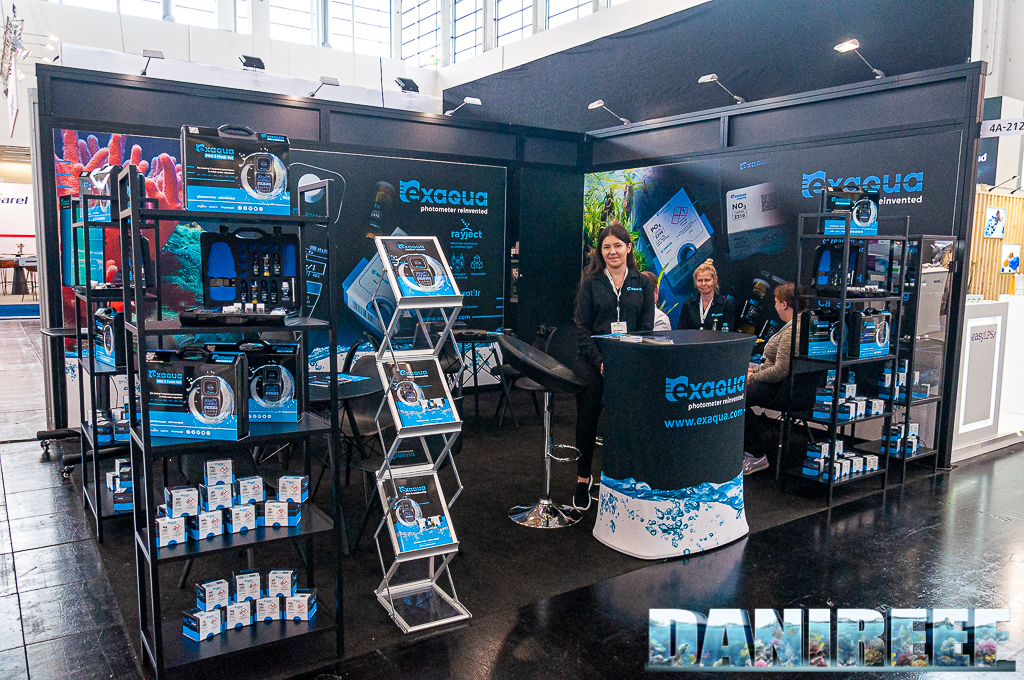
Wandering around the 4A pavilion of Interzoo 2022 we had the pleasure to see the booth of Exaqua, a Polish company that brought its new technological jewel to the exhibition.
Exaqua is a photometer that, as the sponsor says, allows one to do photometric measurements in aquariums.
If you had the chance to read our Editorial, you probably noticed that one of the tendencies of this year was to present new devices to do tests and measure multiple parameters using only one tool. Exaqua is one of these. We saw it in action and our first impressions are extremely positive.
The video of Exaqua’s booth at Interzoo 2022
Before you go on, we leave you to our video so that you can see the booth not only in picture. Clicking on the video you’ll be directly sent to the part about Exaqua, but you can also watch the rest of it. The video is in Italian, you only have to turn the English subs on! Enjoy!
A versatile and complete device
The commercial operation seems to have started well: it’s characterized by a booth curated in every detail, a captivating graphics and an offer that, even though is centered on a single product, is supported by a complete line of reagents and accessories, able to meet every need the user may have.
The testing platform was made by Zoolek and uses a series of its own reagents that cover every parameter of interest.
The photometer comes in two versions, approximately similar in shape, but they differ in the range of the light source and in the sensor.
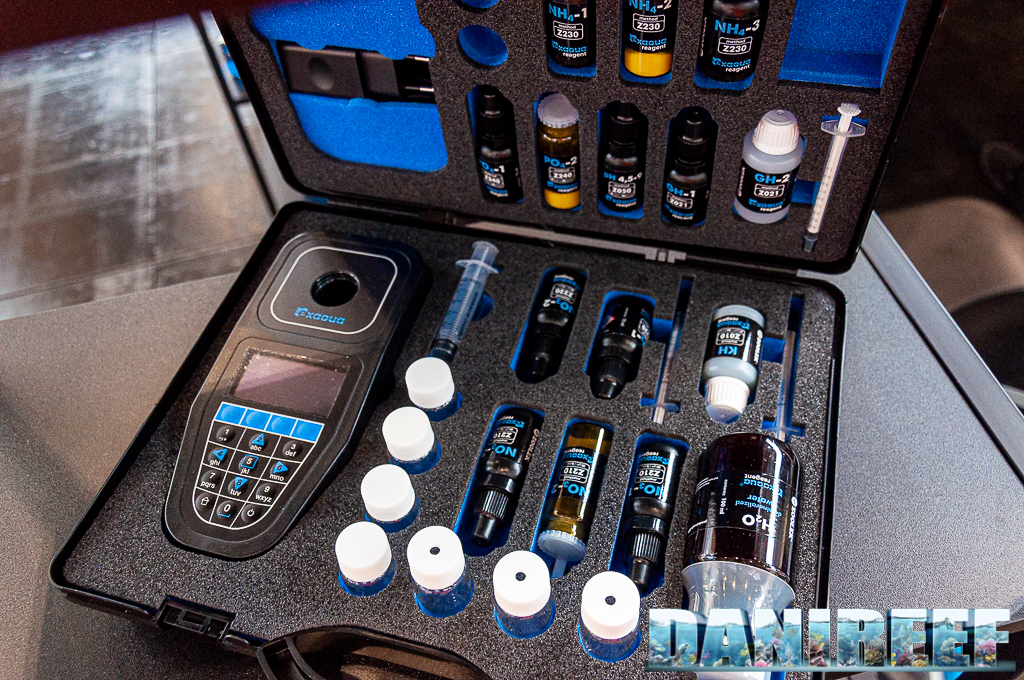
Exaqua PRO 3 can do measurements on 3 channels, with three wavelengths: 470nm, 520nm, and 610nm.
Exaqua PRO 6, on the other hand, adds 3 more channels, for a total of 6, using different wave lengths of 430nm, 470nm, 520nm, 560nm, 610nm and 650nm.
This means a further capability of measurement, reaching a higher number of parameters than the smaller model.
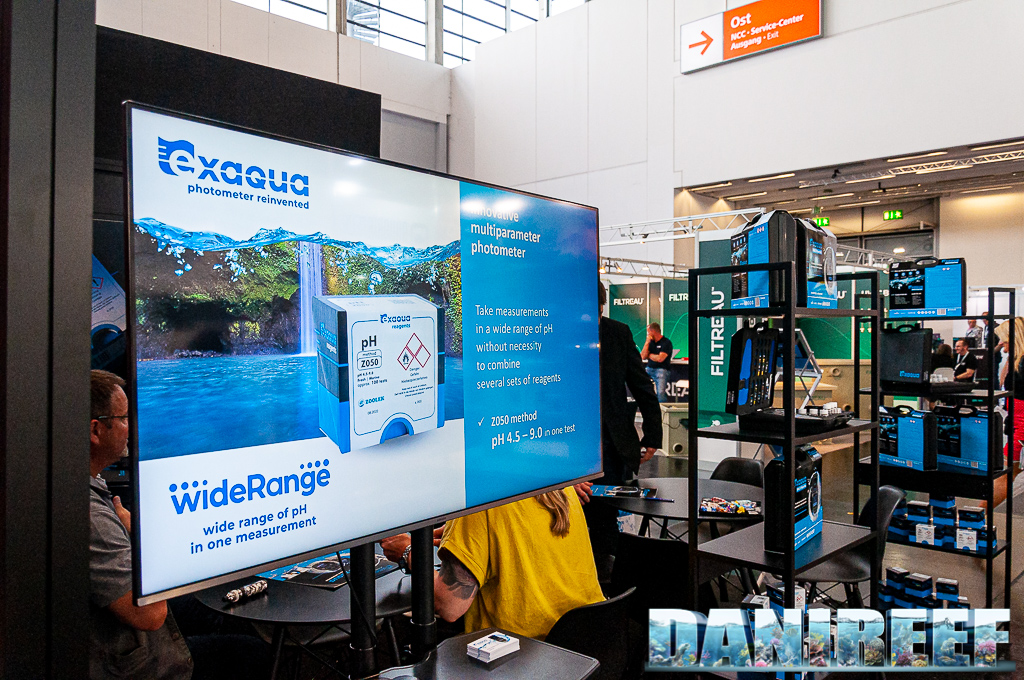
Both the devices were made by Rayject technology, and allows you to do precise lectures without feel the disturbances derived from the external light.
Moreover, there’s the Exatitr function available, that provides a useful video-guide of the procedure to follow step by step in the measurement. A very useful feature to avoid mistakes and forgetfulness.
The practical app Exaqua Reporter allows you to have always available on you mobile phones the history of the measurements and the parameters of your own aquarium.
It will possible to add filters, and produce overviews and various reports. Then you can export the data in .xls and .pdf.
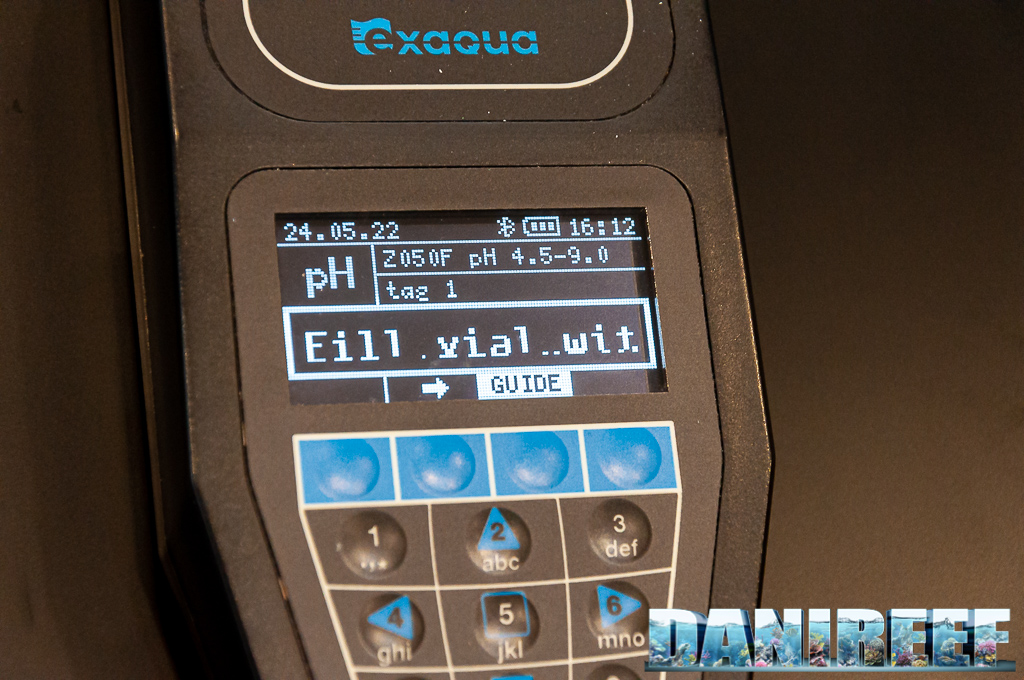
The licenses
You have to keep in mind that the system works with licenses.
De facto, it means that there are 4 different licenses that unlock 4 other firmware sections and allows you to extend the number of the parameters measurable by the device.
The BASIC license is present in each device with Zoolek measurements method, while the EXATITR license, for the video-guide, and the MARINE, specific for salt water parameters, are activated separately.
The EXATITR license is required to carry out measurements on parameters that require titration as an analysis method (for example Ca, Mg, CO2 or GH); it also unlocks the video guide with instructions. However, it should be noted that these three licenses are always included in the purchase cost of the Exaqua photometer.
These three licenses can be purchased separately or all three together with the Z-METHODS set.
The H-METHODS license deserves a separate mention; it gives us the possibility to use the device with Hanna Instruments reagents.
They assured us that more licenses will come in the future, witnessing the extremely versatility of this system.
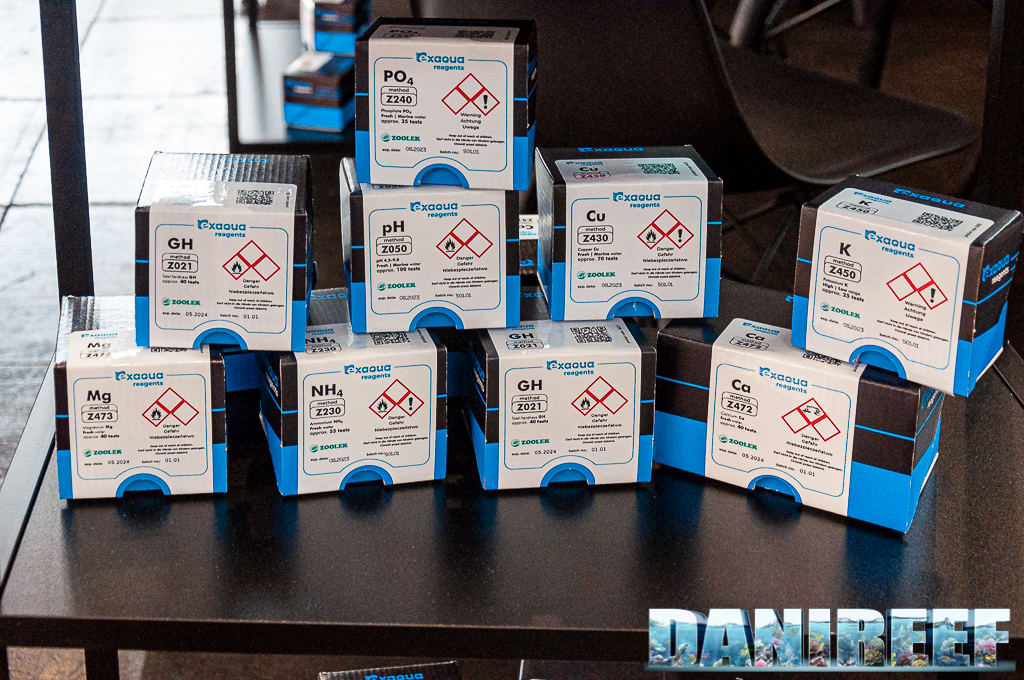
The prices
The Exaqua PRO 3 set should settle around 380 euro. But with 100 euro more we can bring home the Exaqua PRO 6 set. You obviously have to add the VAT.
Both sets include the Z-METHODS license that, as we said, includes Exaqua Basic methods, Exaqua Marine methods and Exaqua Exatitr. However, the reagents aren’t included and they have to be purchased separately. The price of the reagents changes depending on the type of parameter to measure, as well as the number of the measurements for each package.
You start with 8 euro for the simplest (KH) up to 15 for the most complex (NO3 LR).
Finally, Exaqua offers two starter packs with the reagents for Fresh Water and Marine Water series only, while there are four all inclusive offers. The Fresh Water, Marine Water, Water Plant and Water Quality Control set come with the photometers and the related licenses and the specific reagents, all stowed and accessible inside a beautiful black briefcase.
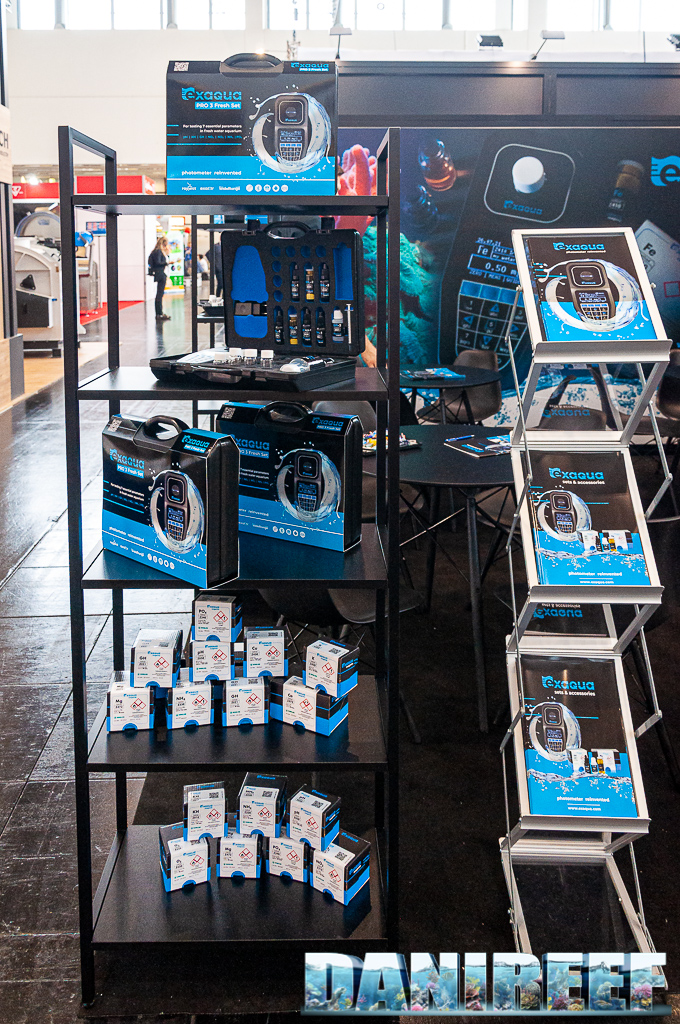
Positive impressions
We witnessed some pH measurements, for the analysis they used a reference solution with a fixed value of pH 7.00 and the results were absolutely in line with the expectations.
Naturally, the pH is a pretty easy parameter to detect, and the procedure is very quick too.
We’ll have to understand how Exaqua behaves with more complex parameters, where the need to eliminate external interferences lengthens the time and the complexity of the procedures.
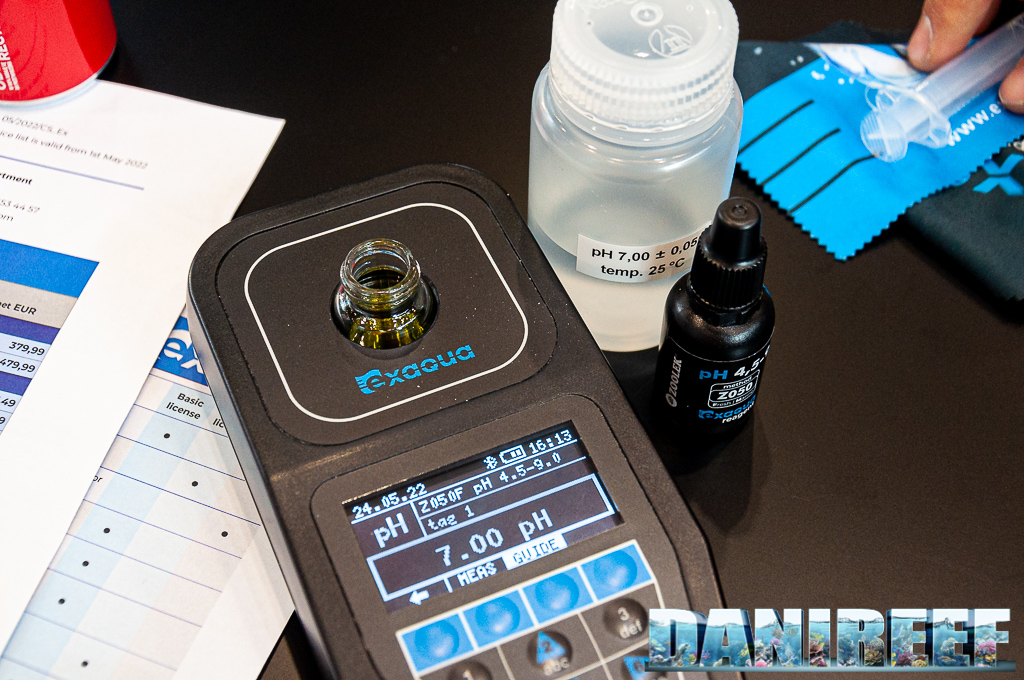
References
We’re hoping to test it thoroughly in the future and to give you more detailed information, we send you to the official homepage.
We invite you to read our Editorial on the exhibition, also to check out the articles of the booths we visited that we’re releasing day by day, or to watch our videodocumentary about this edition of Interzoo 2022.
[Translated by Agnese Poggi]










0 Comments